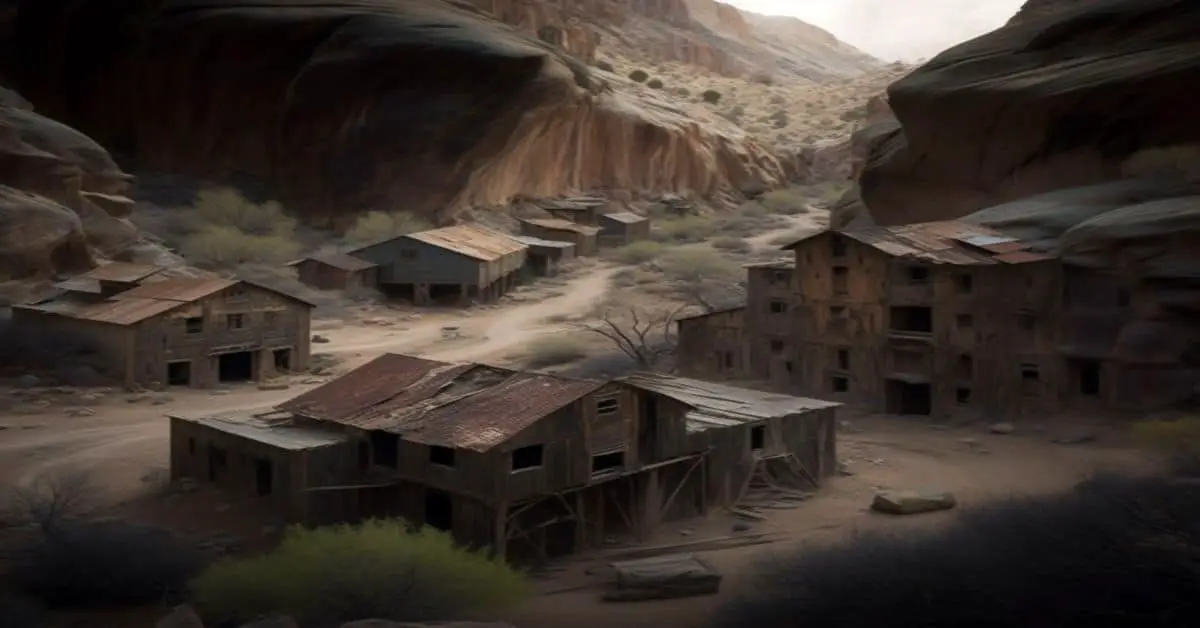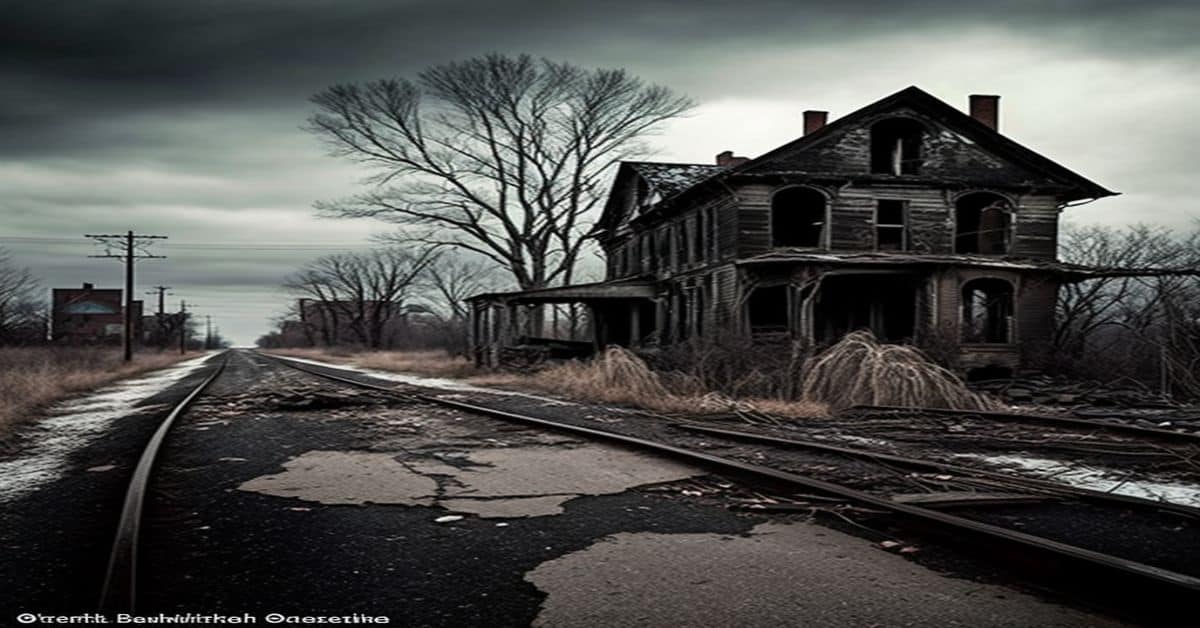Fort Quitman, a former military installation situated in Texas, has been abandoned and forgotten for several decades. Established in 1858, the fort was essential in protecting travelers and the mail route from San Antonio to El Paso. However, the Civil War took its toll on the fort, which eventually fell into disrepair and was abandoned in 1877.
Today, only a cemetery remains near the site of Fort Quitman, but its rich history and ghostly presence continue to intrigue those who venture to discover the lost town. The story of Fort Quitman is one of a once bustling military establishment that is now a forgotten ghost town. The fort’s history is not only a tale of its rise and fall, but it also offers insights into the Civil War and the military’s role in protecting travelers and maintaining peace in the country.
Despite its abandonment, Fort Quitman’s history remains an integral part of the American story and continues to capture the attention of history enthusiasts. This article aims to delve into the establishment, history, current state, and location of Fort Quitman, Texas, and offer readers insights into the fascinating world of this ghost town.
Key Takeaways
- Fort Quitman was established in 1858 to protect travelers and the mail route from San Antonio to El Paso, and was named after Mexican War General John A. Quitman.
- During the Civil War, the post was evacuated by Federal troops and was intermittently garrisoned by Confederate and Union detachments, leading to its quick deterioration.
- The fort was reestablished in 1868 and over the next decade, black soldiers of the Ninth Cavalry and the Twenty-Fifth United States Infantry guarded the mails and scouted for hostile Indians.
- Fort Quitman was abandoned in 1877, regarrisoned briefly in 1880-1882 during the campaign against the Apache chief Victorio, but ultimately abandoned again due in part to its poor location. Today, only a cemetery remains near the site of the ghost town.
Establishment and History
The establishment and history of Fort Quitman, including its initial purpose as a protective outpost along the San Antonio to El Paso mail route and its intermittent occupation by Confederate and Union troops during the Civil War, are well-documented. The military significance of Fort Quitman cannot be overstated, as it played a crucial role in protecting travelers and mail delivery from hostile Indian attacks. The fort also significantly impacted the local communities, as it provided employment opportunities for people living in the area and a source of protection from danger.
During the Civil War, Fort Quitman was occupied by Confederate and Union troops, leading to a mix of loyalties among the local population. The fort’s strategic location made it a valuable asset for both sides, and its capture was a significant objective for Confederate forces.
While the fort’s primary purpose was military, it also benefited the surrounding region economically. The fort’s presence created demand for supplies and services, creating jobs and supporting local businesses’ growth.
Description of Fort Quitman
Located in a region with sandy soil and a hot, dry climate, Fort Quitman struggled to cultivate a post garden and relied on hauling milk and fresh vegetables from nearby towns. The post was infamous for being one of Texas’s most uncomfortable military installations. The adobe buildings had been stripped of all wood, roofs, doors, and window frames, and much time was spent repairing them.
Despite the challenges, the buildings at Fort Quitman were quite extensive, consisting of barracks for two companies, five sets of double officers’ quarters, an adjutant’s office, a hospital, a guardhouse, two storehouses, a bakery, workshops, and wooden cavalry and quartermaster’s stables.
Today, the only remnants of Fort Quitman are the ruins of a cemetery. Although the post did not have a long-lived history, it held historical significance as a military installation that protected travelers and the mail route from San Antonio to El Paso. The post was intermittently garrisoned by Confederate and Union detachments during the Civil War and guarded the mails and scouted for hostile Indians over the next decade.
Despite its uncomfortable living conditions, the post played an important role in the region’s history and is worth exploring for its historical significance.
Current State and Location
Nestled in the arid landscape like a lone cactus in the desert, the remains of a once-thriving military post can still be found near the border of Texas and Mexico.
Today, only the abandoned ruins of Fort Quitman remain, with the cemetery being the only significant landmark. The post was abandoned in the late 1800s, with Fort Hancock established nearby in 1882. The lack of rail transportation in the area was a significant factor in the decision to abandon Fort Quitman, and it has remained a ghost town ever since.
Despite its desolate state, Fort Quitman has become the subject of local legends. Some say that the ghosts of soldiers still haunt the area, while others describe eerie sightings and unexplained phenomena.
The ruins of the once-proud fort are a reminder of the harsh realities of life on the frontier, and they continue to attract visitors who are fascinated by the history and mystery of this forgotten outpost.
Frequently Asked Questions
What was life like for the soldiers stationed at Fort Quitman?
Soldier experiences at Fort Quitman were challenging due to the harsh climate and lack of resources. Daily routines included repairing the adobe buildings, guarding the mails, and scouting for hostile Indians. Fresh supplies had to be hauled from distant cities.
Were there any notable events or battles that took place at Fort Quitman?
Fort Quitman played a significant role in Texas history as a military installation that protected travelers and the mail route. Several notable battles did not take place at the fort. Historical artifacts found at the site include adobe buildings and a cemetery.
What was the relationship between the soldiers stationed at Fort Quitman and the surrounding communities?
The relationship between soldiers stationed at Fort Quitman and surrounding communities is not well-documented. However, the impact on the local economy was likely minimal due to the remote location and difficulties in obtaining necessary supplies.
Are there any plans to restore or preserve the remaining structures at Fort Quitman?
Preservation efforts for the remaining structures at Fort Quitman are not currently underway, despite its historical significance. The site is now only a cemetery, with the adobe buildings having been stripped and abandoned.
What impact did the establishment and eventual abandonment of Fort Quitman have on the local area and its residents?
The establishment and abandonment of Fort Quitman significantly impacted the local area and its residents, particularly on the economy and social dynamics. The post’s presence and operations brought economic benefits, but its later abandonment destabilized the region.


